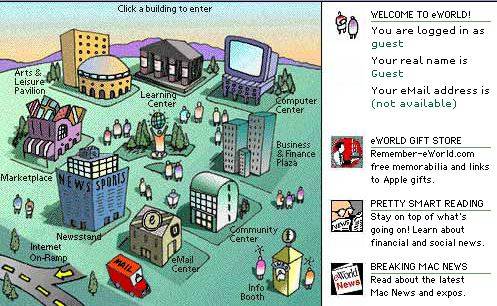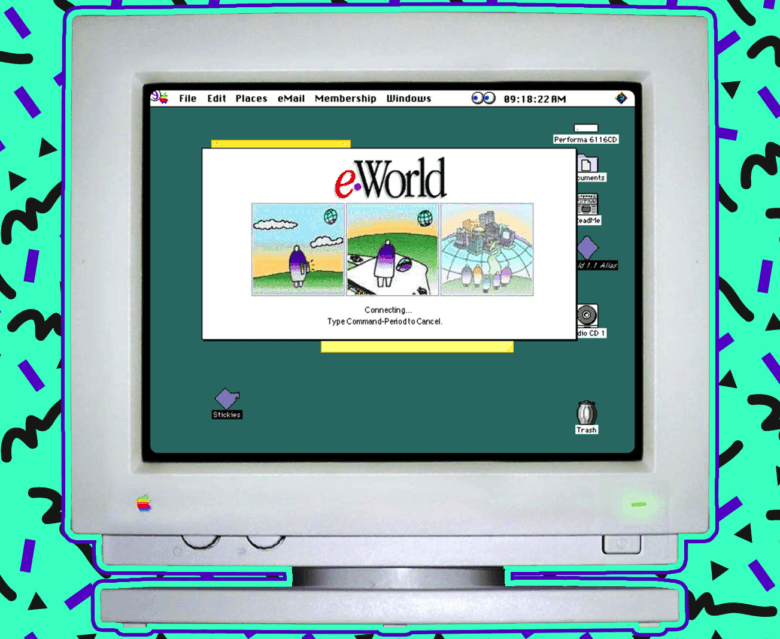 June 20, 1994: Apple launches eWorld, a subscription service for Mac owners that’s designed to compete with America Online and other nascent online properties.
June 20, 1994: Apple launches eWorld, a subscription service for Mac owners that’s designed to compete with America Online and other nascent online properties.
Part messaging service and part news aggregator, Apple envisions eWorld competing with heavy hitters like AOL, Delphi, CompuServe and Prodigy. Unfortunately, Apple’s online service is doomed from the start.
Apple eWorld is an interesting premise
The origins of eWorld trace back to another Apple proto-social network, called AppleLink, intended to connect Cupertino with its dealers and support centers. In the early 1990s, when CEO John Sculley still steered the ship at Apple, the company decided to turn AppleLink into a consumer-facing service.
To fulfill its ambitions, Apple acquired a data center in the San Francisco Bay Area from banking giant Citigroup. It also came to a licensing agreement with America Online, the company that built the basic technology behind eWorld.
As with many of its services, Apple designed eWorld as a “walled garden” so Cupertino could control the user experience. In the 1990s, however, this was not a big departure from the norm. Because nobody quite knew what the internet would transform into, everyone from AOL to CompuServe did something similar. Exclusive content supposedly would differentiate the companies’ offerings.
A ‘walled garden’ approach to the internet

Photo: Apple
In some ways, eWorld was a bit like Apple’s News app. It served as an aggregator of news and entertainment from other services, all filtered through a familiar Apple interface.
Looking at eWorld today, it appears overly cartoony in a way that distracts from, rather than adds to, the user experience. The premise was to turn the internet (or, at least, a limited version of it) into a SimCity-style settlement, with different buildings representing different services.
This made a bit more sense at a time when explaining the internet was still necessary. It was an abstract idea, so Apple did what it had successfully done with the Mac’s graphical user interface — which “borrowed” the metaphor of the desktop to explain computing concepts to a new audience. Full web-browsing support on eWorld didn’t arrive until 1995.
Apple’s flawed execution of an online service
Despite its limitations, eWorld wasn’t cheap. Two off-peak hours with its dial-up service cost $8.95. An hour of service beyond that (or during the day) set people back $4.95.
The bigger problem was granting access to eWorld. As anyone who remembers Apple in the 1990s knows, Cupertino suffered no shortage of great ideas at the time. The problem was turning those ideas into viable products.
Apple abandoned a proposed 1995 Windows version of eWorld due to budget cuts, even though it was more than three-quarters finished. Thanks to a strategic failure, Apple did not bundle eWorld on Macs until late 1995 — even though some of its rivals did.
Ultimately, eWorld picked up 147,000 users. Apple eventually phased out the service in 1996, with remaining customers migrating to AOL.


